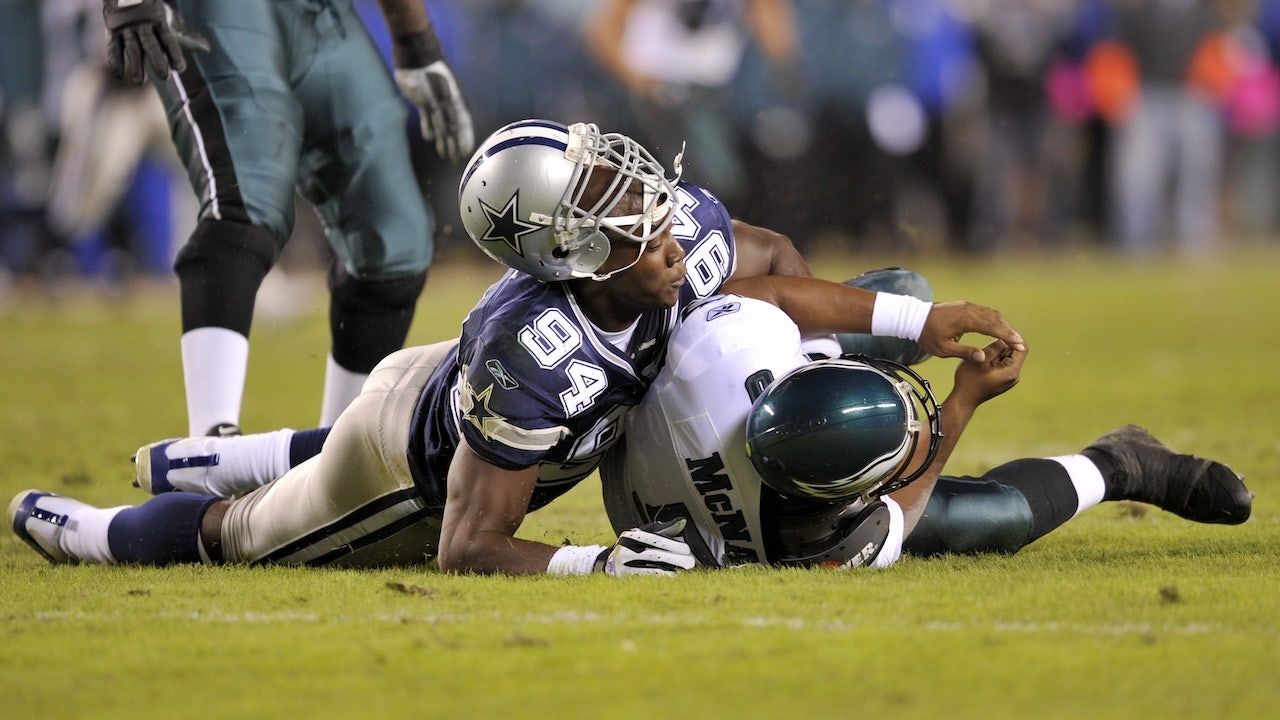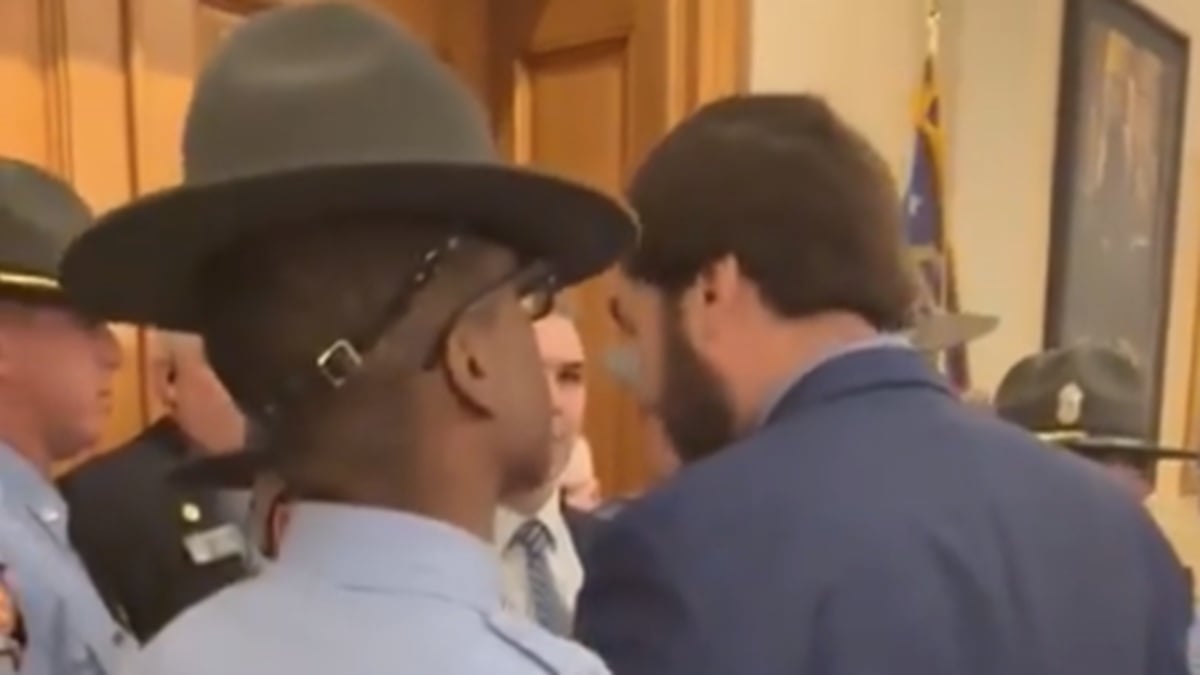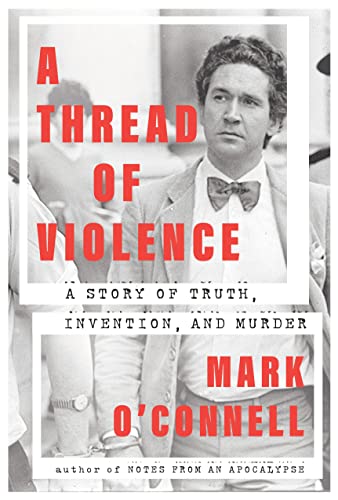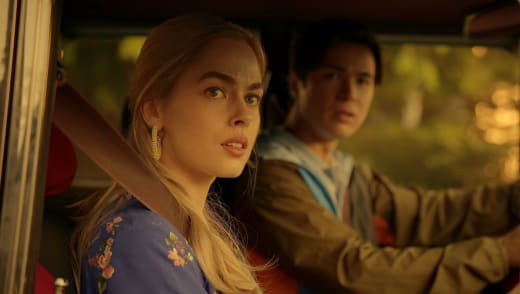There’s a moment midway through Mark O’Connell’s latest book, A Thread of Violence: A Story of Truth, Invention, and Murder, in which O’Connell is lounging on his young daughter’s bed shortly before her bedtime. He’s watching her thumb through her baby pictures on his phone when the phone begins vibrating. The pictures disappear and the name Macarthur appears onscreen. O’Connell takes the phone from his daughter and allows it to ring out before handing it back to her.
The caller was Malcolm Macarthur, a man who had spent three decades in jail for double murder, and whose life and likeness the Irish novelist John Banville had used as the basis for the protagonist of three of his novels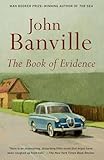 . O’Connell knew these novels intimately—he had written his dissertation on Banville’s fiction. He’d quite literally spent thousands of hours thinking, reading, and writing about the fictionalized version of the man who was now calling him.
. O’Connell knew these novels intimately—he had written his dissertation on Banville’s fiction. He’d quite literally spent thousands of hours thinking, reading, and writing about the fictionalized version of the man who was now calling him.
Macarthur was calling, as he occasionally did, for a chat, or to clarify a detail he had previously provided O’Connell, who was interviewing him for the book he was writing on Macarthur. O’Connell is unsettled, but his daughter is oblivious. The moment’s purity has been tainted by the intrusion.
“There was this strange sense of the subject seeping into my life,” O’Connell explained over Zoom, from his home in Dublin. O’Connell, 44, is thoughtful when he speaks, occasionally running a hand through his shock of greying hair. When we spoke, it was still several weeks away from publication day and he seemed calmly concerned about how his subject would interpret the book—itself an interpretation of Macarthur’s life and crimes—and how that might further complicate their already awkward relationship.
“If anything,” he says with a look of genuine surprise, “my relationship has become even stranger since I stopped interviewing him.” I get the distinct impression that O’Connell couldn’t have imagined, when he first began the book over three years ago, that he would still be speaking to Macarthur several months after he finished it. “It’s the most complicated relationship I’ve ever had.”
*
O’Connell was born in 1979 in Kilkenny, a small city in south-eastern Ireland, a hundred or so miles from Dublin. Born into a family of pharmacists (his brother runs the pharmacy founded by his grandfather), O’Connell jokingly calls himself as the black sheep of the family. He attended Kilkenny College and was a dedicated classical musician throughout his adolescence. As the lead pianist of the Kilkenny Youth Orchestra, many of his evenings and weekends were taken up with piano and violin practice. Kilkenny also had a lively punk scene, of which O’Connell was an enthusiastic follower: “I had this two-pronged thing going where I would go to orchestra practice with my violin, at 16 or 17, and be there all day, and then my friends with their mohawks would be waiting for me on the bench outside.”
After studying English at Trinity, O’Connell began writing for Mongrel, a magazine founded by two other Trinity graduates, which he calls “a real crucible for me and lots of other writers and photographers.” Before the magazine called it quits in 2008 (not before turning down a deal to be absorbed by a then-ascendant Vice), O’Connell toured with a rock band and was commissioned to travel to Arizona to write about Joe Arpaio, the notorious Sheriff and jail-owner who was later pardoned by Donald Trump. “It wasn’t like there was a lot of money,” O’Connell explains, “but there was enough money for me to get sent to Arizona to write a story, which The Irish Times never would have done.”
By 2006, O’Connell returned to Trinity for his masters, for which he wrote a comparative study of Flann O’Brien and Jorge Luis Borges. Both of these writers’ presences can be felt in O’Connell’s writing—the former, for his gleeful and wry humor; the latter for the analytical approach to the interpretation of stories. “I started writing and thinking through reading fiction and being interested in how it operates and that, I feel, may have seeped into my reading of the world,” he told me. O’Connell then spent several years writing a PhD on John Banville’s fiction. It’s worth pointing out here that anyone seeking a better appreciation of O’Connell’s style—its trenchantly observed ironies and exactingly austere prose—could find worse starting points than Banville’s writing. A wonderful account of O’Connell’s not infrequent encounters with the subject of his PhD was featured in this very publication in 2011. Here he is on encountering Banville at lunch:
When this happened, I would usually nod casually and discretely in his direction and say to my lunch companion something like “there goes the boss man,” or “there’s the gaffer now.” It amused me, for some reason, to think of myself as a low-level functionary, labouring away obscurely for years, scrutinizing texts and producing a complex 100,000 word response unlikely to be read by more than a tiny handful of specialists, as though this were a service for which I had been engaged by an eminent and enigmatic novelist.
A year after his doctorate, he was awarded a postdoctoral bursary—money, an office, and a year-long stipend—to help him turn his thesis into a book. He says he mostly used the year to do a lot of nothing, and quite a bit of his own writing: “I think even when I was safely ensconced within the School of English at Trinity, I was always distracted by the work of writing.” Examiners remarked that he seemed more interested in the business of style and sentences than with communicating his argument and ideas. “I was a frustrated writer as a PhD student.” The academic book was published a year later, by which point he had begun making a name for himself as a prolific writer of literary and cultural criticism for websites such as The Millions, Slate, and NewYorker.com.
In 2013, The Millions made a brief foray in the world of ebook publishing, and O’Connell was commissioned to write its first. Epic Fail: Bad Art, Viral Fame, and the History of the Worst Thing Ever examined the stories behind some of the most cringingly amusing things the internet has given us: Monkey Jesus, Rebecca Black—that sort of stuff. Epic Fail caught the attention of Molly Atlas, a literary agent. It was during one of his early conversations with Atlas about potentially writing a book that O’Connell mentioned an essay on transhumanism he’d written for Mongrel Magazine years earlier. That conversation led to his first book deal. “I had a really strong sense that she understood what I wanted to do as a writer in a way that I didn’t explicitly understand myself—and also what I could do that could be marketable,” he recalls. “I had all kinds of hair-brained schemes for books—unworkable—and she would politely say ‘Maybe your second or third book after you’ve established yourself.’”
examined the stories behind some of the most cringingly amusing things the internet has given us: Monkey Jesus, Rebecca Black—that sort of stuff. Epic Fail caught the attention of Molly Atlas, a literary agent. It was during one of his early conversations with Atlas about potentially writing a book that O’Connell mentioned an essay on transhumanism he’d written for Mongrel Magazine years earlier. That conversation led to his first book deal. “I had a really strong sense that she understood what I wanted to do as a writer in a way that I didn’t explicitly understand myself—and also what I could do that could be marketable,” he recalls. “I had all kinds of hair-brained schemes for books—unworkable—and she would politely say ‘Maybe your second or third book after you’ve established yourself.’”
O’Connell was publishing other pieces around this time which were much more directly personal in tone. It’s in these pieces you can begin to see emanations of the obsessions to which he would later return in his books—mortality, parenthood, technology. Among the most personal and beautiful is “Can Parenthood and Pessimism Live Side by Side?”, published in The New York Times in 2014, shortly after the birth of his first child. It begins by recounting how, as a 10-year-old, O’Connell accompanied his dad (a pharmacist) to visit one of his patients in hospital. While there, an old and possibly infirm woman showed O’Connell her vagina.
“I was in shock, I think, as much from the fleeting revelation of the old woman’s private misery as of her private anatomy, ” he writes. “I think of the experience now as a strange intrusion into my happy innocence, a weird emissary of the suffering and senselessness of an adult world, a world of aging and grief, that lay beyond the little shelter of my childhood.” He blocked the event out until many years later, and mentions how, in college, reading Beckett’s abject characters reminded him of her. The image is the starting point for a sobering and meditative account of his attempt to reconcile the dour, pessimistic philosophers towards whom he feels drawn—E.M. Cioran, Schopenhauer, and the like—and the need, when his son was born, to be open to the possibility of optimism:
In those first days, when my wife and he were still in the hospital and I was spending a lot of time slumped in a rickety leatherette chair between bed and cot as they slept, I did a thing that you should probably never do when you have just become responsible for a new life in the world: I read the papers. As I sat there turning the pages of The Irish Times in quietly accumulating horror, my infant son sleeping beside me, I had never quite felt with such blunt and insistent force the truth of Schopenhauer’s view of life: massacres, rapes, recurrent outbursts of savage recreational violence, a world built on a seemingly unshakable foundation of economic cruelty and injustice, the continuing project of environmental destruction. The whole paper was a dispassionate catalog of brutality, perversity, stupidity and greed, capped off with a couple of pages of TV listings—and there was nothing much good there either. What a world. What a species. What a raw deal for the poor little guy.
This passage is representative of the best of O’Connell’s writing: the prose is lean; its exactness and choice of imagery deliver the reader right to heart of the matter; and the reference to TV listings brings a dash of levity. The primary concern invoked in that essay—namely, how to reconcile having and caring for a child on a cold, unfeeling planet whose inhabitants and ways of living seem ineluctably geared towards their mutual destruction—is the bedrock upon which O’Connell sets down his first two books, To Be A Machine and Notes from An Apocalypse
and Notes from An Apocalypse . Though both books deal with different subjects, they are both filled with beautiful, deeply personal moments shared with his family as O’Connell comes to terms with his real subject: mortality.
. Though both books deal with different subjects, they are both filled with beautiful, deeply personal moments shared with his family as O’Connell comes to terms with his real subject: mortality.
2017’s To Be A Machine saw O’Connell travel across America meeting the transhumanists who believe, for a variety of reasons, that we should live forever. To do this, they argue, we should use everything at our disposal to fund any research or inventions that could make this happen. The result is part-gonzo journalism, part-meditation on the threat that artificial intelligence (and its zealots) pose to humanity, streaked with sharp observations about Silicon Valley’s role in our evolving and increasingly problematic relationship with technology. All of these thoughts swirl about in O’Connell’s mind as he and his wife go about the business of raising their first child together.
Then, in April 2020, O’Connell published Notes from An Apocalypse, a quest to understand those preparing for societal collapse and life post-civilization. He travels to: the Mars Conference in Los Angeles to listen to the specialists, lobbyists, and enthusiasts trying to make life of Mars a reality; Ukraine, where he spends time in the Chernobyl Exclusion Zone; and he even visits New Zealand to explore why people like Peter Thiel (read: the ultra-rich) are preemptively buying citizenship and land in anticipation of some nearing doomsday scenario. O’Connell’s concern for (and obsession with) his subject permeates the narrative until the birth of his daughter, whose innocence and simple needs brings the book’s central concerns into sharp relief.
It was a strange time to publish a book about the world ending, just as the world began to shut down. Ireland had one of the strictest and longest lockdowns anywhere on the planet. I happened to live in Dublin during lockdown. Early on in the pandemic, the city was a ghost town; you could walk the entire length of a street without meeting a soul. It was around that time that O’Connell, who had had an interest in Macarthur’s case for decades, decided he would like to finally write about him. He began pacing the city in the hopes of seeing him. One afternoon while out walking the empty city, O’Connell spotted Macarthur, made his way towards him, and gave him his pitch.
*
A Thread of Violence is O’Connell’s most personal book yet. It begins with an explanation of the author’s own connection to a series of particularly grisly and senseless murders that took place in the summer of 1982. Though O’Connell was a toddler when the murders took place, the murderer, Malcolm Macarthur, had hidden out in the apartment next door to O’Connell’s grandmother in an affluent suburb of South Dublin. That the apartment belonged to Patrick Connolly, the Attorney General—then the most senior officer of the law of Taoiseach (prime minister) Charles Haughey’s already embattled government—is just one of the many bizarre and improbable details of the case. Though he had known the story since he was a child, O’Connell first wrote about this fascination in an essay for The Millions in 2012, after encountering Macarthur one evening shortly after his release.
Macarthur was born in 1945 on a sprawling estate in County Meath to a wealthy landowning family. His paternal grandfather had come from Scotland, and his maternal ancestors from England. Despite living a life that looked a lot like the Anglo-Irish (read: Protestant) lifestyle, Macarthur was Catholic. He attended UC Davis at the height of the sixties (wonderfully rendered by Banville in The Book of Evidence) before returning to Dublin where he socialized in the city’s bohemian bars and spent his time pursuing everything a man of leisure, learning, and means might. Though he came from money, Macarthur wasn’t good with it. He lent too widely and too deeply, and, more consequently, was pathologically averse to labor of any description. What was, for its time, a very considerable inheritance, had dwindled almost to nothing by his mid-30s.
Macarthur committed the crimes, in his own words, to be master of his own time. “No matter what frame he (or anyone else) might attempt to put on it,” O’Connell writes, “the fact is that he committed two murders because he wanted to protect his own free time.” That the crime Macarthur was locked up for would go on to cost him 30 years of freedom—during which he would have quite a bit of free time, though be master of none of it—was an irony that was likely not lost on him. Inspired by the spate of robberies that the IRA had been carrying out for much of the past decade, Macarthur—a ludicrously impractical man—decided he would rob a bank. He searched the national papers and found a gun for sale in a small town named Edenderry in rural Ireland.
To get there, he decided to steal a car in Phoenix Park, a large park at the edge of the city center. When a young woman sunbathing noticed a man trying to get into her car, she intervened, only to have a fake gun pointed at her, and was bundled into her car. “Is this for real?” she asked. Then, using a lump hammer, Macarthur proceeded to violently beat the young woman, before driving out of the park across town, and dumping the car, with her unconscious body inside, down a lane. Her name was Bridie Gargan. She was 27 and training to be a nurse at Richmond Hospital. She would die of her injuries at that same hospital several days later.
The allegedly unplanned murder set Macarthur’s plans back a day or two, but he managed to make his way to Offaly. Macarthur arranged to buy the gun from Donal Dunne, a 27-year-old farmer, at the edge of town. While examining the shotgun, Macarthur took a step back, and said “Sorry, old chap” before shooting him in the face. Macarthur dragged the body away and half-heartedly hid it in the bushes. After the murders, he sought refuge in his girlfriend’s friend’s home in South Dublin. Rather unfortunately, his girlfriend’s friend was Patrick Connolly, the Attorney General, under whose auspices the manhunt for a suspected serial killer was continuing. Caught within weeks, he pleaded guilty and received 30 years in prison. No evidence was heard in court. The double murder didn’t just rile the nation—the Attorney General’s seemingly inexplicable connection to the case almost brought down the government.
*
Not infrequently whilst reading this book I was reminded of the famous opening lines from Janet Malcolm’s masterful 1989 study on the ethics of journalism, The Journalist and the Murderer , in which she summarizes the journalist’s relationship to their subject: “Every journalist who is not too stupid or too full of himself to notice what is going on knows that what he does is morally indefensible. He is a kind of confident man, preying on people’s vanity, ignorance, or loneliness, gaining their trust and betraying them without remorse.” The subject, Malcolm writes, is forced to confront that the journalist, who appeared so understanding and willing to listen, “never had the slightest intention of collaborating with him on his story but always intended to write a story of his own.”
, in which she summarizes the journalist’s relationship to their subject: “Every journalist who is not too stupid or too full of himself to notice what is going on knows that what he does is morally indefensible. He is a kind of confident man, preying on people’s vanity, ignorance, or loneliness, gaining their trust and betraying them without remorse.” The subject, Malcolm writes, is forced to confront that the journalist, who appeared so understanding and willing to listen, “never had the slightest intention of collaborating with him on his story but always intended to write a story of his own.”
I am unsure what exactly Macarthur believed he would get out of having a writer of literary nonfiction writing about his life and crimes. Sympathy? Exoneration? A reexamination of his character? The resultant work is a masterpiece—a complex, compelling, and not exactly flattering account of the author’s attempt to understand the 77-year-old man who served three decades in jail for the cruel and senseless murder of two perfect strangers. Macarthur, who considers himself an intellectual and a “private scholar,” plays the role of reluctant but dutiful subject, telling O’Connell that if a writer is going to write about him, they may as well have the right facts at hand. It becomes quite apparent that Macarthur is intensely lonely and doesn’t often have people to speak to. He seems flattered that someone—particularly a writer—such as O’Connell took an interest in him.
“No one really realized how unlikely it was that he would agree to speak, least of all to me,” O’Connell tells me. “It was sheer dumb luck—a little bit of wiliness on my part, and a leap of faith on his.” When O’Connell decided to finally approach him that day on the street, he gave him a handwritten note, one of his books, and a copy of The New York Review of Books (containing a recent piece written by him)—in a direct appeal to Macarthur’s vanity. O’Connell’s position within the literary world was enough to set him apart from the other crime journalists and sensationalist TV people who had been chasing him down and offering him money. Macarthur agreed to speak to O’Connell about his life on the condition that the details of the crimes would be off limits. Discussing that would violate his parole and immediately result in his being sent back to jail. O’Connell spent close to two years interviewing him on and off, usually at Macarthur’s apartment, though sometimes on walks around the city.
“I prefer facts,” Macarthur told O’Connell during one of their first meetings, when asked if he read much fiction. He might prefer facts, but he certainly has a strange relationship to them. Early in the project, O’Connell realized that he would be on shifting ground with his subject’s mercurial approach to the truth. For example, O’Connell might bring up a detail that was mentioned in the press, only for Macarthur to insist that such a detail was in fact untrue and proceed to tell a different version of events. O’Connell would then check this against the police records—which included Macurthur’s deposition—and find a completely different version of events. When O’Connell would re-present this information to Macarthur during their next visit, Macarthur would contradict and maintain that his current version of the story was the truth. Macarthur’s fabulation is made even more complicated by the fact that he seems to believe his own distorted versions of certain events and details.
If this wasn’t labyrinthine enough, O’Connell had already spent years of life studying a fictionalized version of Macarthur—Freddie Montgomery—before he’d even met him. Details about Macarthur’s personality, as O’Connell points out in the book, had bled off the page, shaping O’Connell’s vision of Macarthur before they had ever met. “He was completely confused and enmeshed with this fictional character that I had spent a lot of time thinking and writing about,” he remembers. “There was something in that that provoked me into wanting to write about him as well.”
Macarthur has not yet read the book. “I’ve warned him numerous times—he knows exactly what he has said to me, and what of those things I have included in the book,” O’Connell explains. “That’s a different thing from his seeing the result of what you’ve spent, on and off, two years doing and thinking about.” A Thread of Violence is a book about stories—specifically, how we tell and interpret them, regardless of their relationship to the truth. “In a way, this subject felt perfect for me,” O’Connell explains. “Obviously, the story is pretty wild and compelling in itself, but there’s something about it that—at least in the way I felt compelled to approach it—is not just a compelling story but is also about stories themselves and about the relationship between reality and fiction.” There’s a moment midway through where a friend of O’Connell’s, who knows about the book, reprimands him for talking about Macarthur as though he were a fictional character whose intentions could be parsed the way one might approach a literary text.
Reading A Thread of Violence is to watch Macarthur simultaneously develop and contradict his story in real time, and it reminded me of that Joan Didion quote, “We tell ourselves stories in order to live.” That much-abused quote is often used cheerily to get at the idea that storytelling is our way of interpreting our experiences and connecting with one another; read it another way, it seems to hint at the less life-affirming, but more interesting notion that there is no end to our capacity for self-delusion, for telling ourselves whatever we have to if it makes living that bit more bearable.
In one of the book’s most memorable scenes, Macarthur reveals to O’Connell that it is only if he views himself as a fictional character—and the event one singular, if life-changing, scene in the story of his life—that he can then begin to comprehend the motivations that led to the murders. Macarthur’s nebulous relationship to the truth aside, O’Connell’s connections to Macarthur and his likeness to Freddie Montgomery only deepen his “long-standing belief that reality itself was a niche subgenre of fiction.” What O’Connell is after—acknowledgment, emotion, contrition—remains elusive and out of reach until the end. Instead, we are left with an image of Macarthur sitting alone in a darkening room and the sense that if we now know everything, we also know nothing. I wonder what story Macarthur will be able to tell himself after he has read the book.

